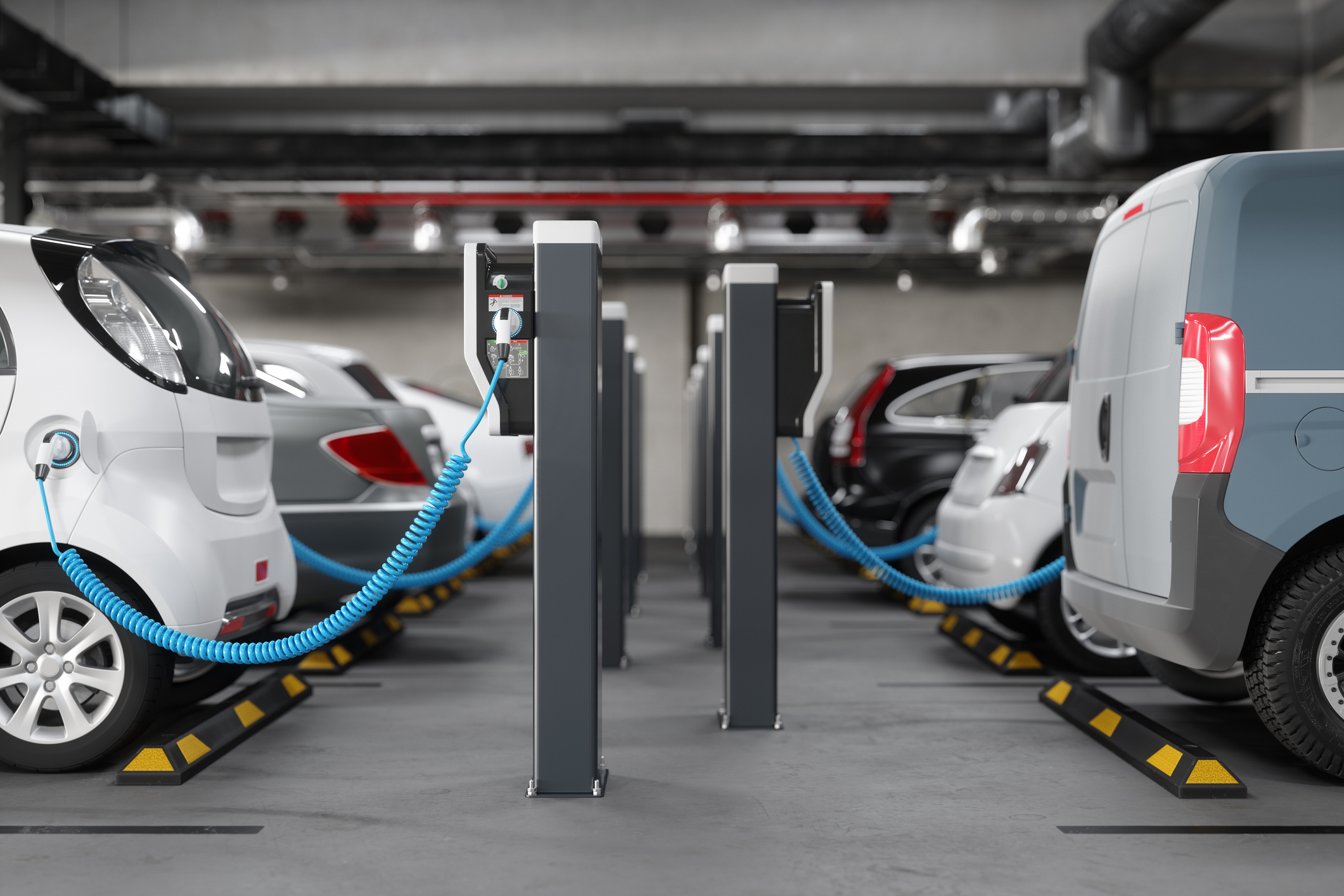As demand flexibility programs gain more traction among utilities, and as electric vehicles (EVs) saturate the market and change energy usage patterns, it’s clear that EVs are irrevocably altering the energy landscape. If utilities aren’t already preparing for the challenges of EV charging or adding EV batteries to your distributed energy resource (DER) initiatives, they may quickly fall behind a rapidly evolving utility market.
Given the relative infancy of DER adoptions among utilities, including EV charging residential pilot programs, many utilities are challenged with how to best evaluate the strategic value of these programs. From learning how to start a pilot program to key considerations in evaluating your EV charging programs, utilities are at a crossroads in balancing tech disruption, global decarbonization requirements, and regulatory considerations.
Evaluating EV Charging Adoption and Program Needs
There are two ways to evaluate EV charging usage in your areas while laying the groundwork to prepare your programs. The first is through passive measures such as understanding EV adoption, utilization patterns, and charging behavior in your area. This helps you understand where the constraints and opportunities lie within the grid, as well as your preparedness for increased usage, shifts in peak usage, and other behavior-based load control opportunities. It’s also important to gather information around your time-of-use rates, specifically around commercial and public charging stations, and what percentage of use your residential charging program opportunities will constitute.
If you’ve moved beyond the passive evaluation stage and have implemented any type of EV battery pilot, then you can gain even more actionable information. Some of the key examples you’ll want to consider include the direct load controlled by your utility or distributed energy resource management systems (DERMS) so that you’ll have an accurate picture of how your program impacts peak load times and overall load shape. Also be sure to evaluate your events-based management of electric vehicle supply equipment (EVSE) load, to compare against your forecast predictions. Finally and most importantly, actively evaluate your pilot success and plan for program expansion by analyzing the incentivized charging behavior, driver usage patterns, and overall device participation and program enrollment.
Key Elements of a Residential Charging EV Program
There are three main considerations to evaluate when creating your EV charging residential program, or when incorporating EV batteries as a new device type into your existing DERMS programs.
Evaluate your overall goals and objectives.
Using the philosophical framework of Specific, Measurable, Achievable, Relevant, and Time-Based (SMART) goals, determine at the outset what you hope to achieve from your program. Start by creating a hypothesis and testing it throughout your program’s duration.
Continue by identifying your grid needs, and how EV adoption impacts your load shape. Look to your current load management strategies, and what is possible as EV adoption rises in your area. Check load management, and plan based on your grid performance and reliability. Finally, create SMART goals around enrollment and incentivizing charging behavior. Your program success lies in customer enrollment and participation, so ensure you’re planning for how best to engage your customers.
Strategically Design Your EV Charging Program
Once you’ve established your SMART goals and have some target objectives in mind, begin designing a program to achieve those needs. Consider the parameters you’re working within, including any grid or technological limitations based on the most common types of EV batteries. Outline your go-to-market approach, and specifically focus on how to ride the momentum of introducing a new program to your customers.
From there, capitalize on community curiosity, and be prepared with a robust FAQ and easy website design to enroll and engage your customers to participate. Determine what your incentive mechanisms are, and how to deliver them to customers at a cadence that will ensure further participation. Consider all of your options, including referral programs, rebates, and cross-promotion for other DER programs you may be running concurrently. Finally, when designing your program, think about how you will gather data and report on your outcomes, specifically how you will measure against your SMART goals to determine overall program success.
Implement the Right Technology for Your Needs
Each residential EV charging program will be slightly different, with technology solutions yielding different benefits. Consider both your hardware and software infrastructure when designing your programs. Be informed about what your software can measure or control, and your integrations with your grid systems as well as with different residential charging stations. Each technology solution offers different reporting features, so evaluate that your selection will have the data essentials relevant to your program needs and SMART goals. Finally, ensure that your DERMS technology will support your EV program, including event calling, incentive management, and comprehensive reporting.
You don’t have to create these programs entirely on your own, as more utilities are testing their programs that you can learn from. Find similar models to learn from, that mirror your goals, including SnoPUD’s FlexEnergy pilot.
Building Your EV Charging Pilot or Program
Whether you’re just starting with a pilot program or scaling up your efforts into a more robust program, here are some tips for making your efforts as successful as possible. Test different means of incentive messaging, and tap into multiple values for the end consumer to participate. For example, you can offer rebates or monetary incentives alongside more value-driven, cause marketing messages such as “be part of the climate-saving movement.” Experimenting with which messages work in your market helps cast a wide-reaching net and grow program participation.
Vary your recruitment methods to reach the largest possible audience. Remember that this is a complex decision for customers to make, and give them enough time to thoughtfully evaluate their options and understand the value you’re providing. Avoid short recruitment windows, cross-promote your new program across your main utility app or website, as well as promote within other similar DER programs you might be running. The more a potential customer sees your pilot offering, the more comfortable they will become, and the more opportunity they have to engage.
Other technical challenges revolve around your technological partnerships and building an iterative process with them. At the outset, make sure to understand your technology manufacturer’s programs, and any potential limitations, specifically regarding integrations, control, or reporting functionality. Each provider will have its programs and its pros and cons, so evaluate each potential vendor against your program’s SMART goals and objectives.
Find a technology provider who is interested in your use case and individual needs, and who wants to grow with you to evolve capabilities that meet new demands that arise as your program grows. Remember that this is a new pivot in the energy industry, and all technology solutions will differ depending on their maturity in the market. Evaluate based on long-term partnership and give a certain amount of leniency to any gaps your technology may provide.
Key Takeaways for a Successful EV Charging Program
While there are many different tactics to think through when designing your EV residential charging program, there are a few key takeaways for creating a successful program. As we come to a close, let’s take a look at a few ways to optimize your programmatic objectives.
Customer Communication and Marketing
The success of your EV charging program rests on expanding your customer enrollment and participation. Fortunately, there are some handy marketing tips to help you educate and engage your customers to help meet your program goals.
- Create the most effective, thoughtful design, with the end-use consumer in mind. Have your appropriate Terms and Conditions, FAQs, and penalties outlined and easily available for your customers.
- Think through your go-to-market strategy, and how you will incentivize customers to participate. This includes making enrollment and opt-outs easy, and seamlessly integrating into other platforms your customers may already use.
- Clear, timely communication with your customers helps them be informed of program events and opportunities while building trust and satisfaction with your brand.
- Think through the customer experience and needs, specifically in lowering potential barriers to enrollment. This includes educating customers on how to keep their devices physically connected to the platform using Wi-Fi, as well as providing support for multiple devices, or participation in multiple programs.
Technology and Integrations
With more EV adoption than ever, your customers will likely come to you. Still, not all device types are the same, meaning that not every potential device partner may be suitable to either the needs of the customer or the utility.
- Understand your device integration needs, and connect DERs through APIs. Verify before implementation that your chosen technology will successfully integrate with the device types and brands within your program.
- Ensure that your data is centralized and easy to interpret so that you can make the most of your insights. From device-level information to demand forecasting analytics to better determine your load shape, select the technology that will give you the insights you’re seeking.
- Safeguard your information by thoroughly vetting that your potential technology partners are experts in data security and privacy, especially if they will be integrating with any PII or other vulnerable customer information.
- Normalize and streamline any technology that’s customer interfacing, so that it’s user-friendly as well as recognizable to your brand. Think about how customers will interact with your technology, and make it a smooth, branded experience wherever possible.
EV Charging Program Conclusion
Electric vehicles are far more pervasive than personal transportation, especially as EVs relate to the supply chain, the grid is and will only continue to face an unprecedented challenge. With global decarbonization and electrification goals, the push for more electric vehicles is not only inevitable but imminent. Developing your EV charging pilot today will help prepare your operation for the grid of the future.






